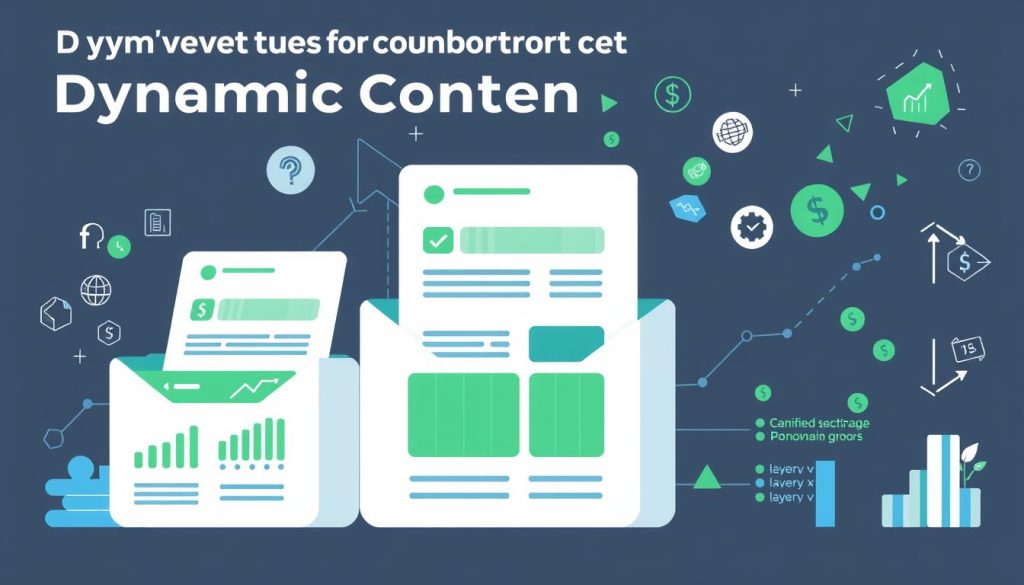In today’s fast-paced financial world, fund managers need effective ways to connect with investors. Email marketing is a powerful tool for building relationships and sharing investment strategies. By mastering email marketing, professionals can boost client engagement and drive better results.
Crafting compelling client engagement emails is an art that combines financial expertise with communication skills. These messages serve as a direct line to investors, offering insights into market trends and portfolio performance. When done right, they can strengthen trust and keep clients informed about their investments.
A well-planned investment strategy communicated through email can set fund managers apart in a crowded market. Regular updates and personalized content show investors that their money is in capable hands. This approach not only retains current clients but can also attract new ones through word-of-mouth referrals.
Key Takeaways
- Email marketing is crucial for fund managers to engage investors
- Effective client engagement emails build trust and keep investors informed
- Personalized content demonstrates attentiveness to individual investor needs
- Regular communication of investment strategies reinforces expertise
- Well-crafted emails can lead to client retention and new referrals
Understanding the Fundamentals of Fund Manager Email Marketing Tips
Email marketing is a key tool for fund managers to connect with investors. It helps build strong relationships. Learning the basics can improve how you talk to clients and manage their wealth.
Key Components of Effective Financial Email Communications
Good financial email campaigns are clear and to the point. They offer value to investors. Personalizing messages is key, as it meets investors’ specific needs and goals.
Regulatory Compliance in Investment Email Marketing
Fund managers face a complex set of rules when sending emails. Following SEC guidelines and other laws is essential. This means using proper disclosure and not making false claims about investments.
Building a Quality Investment Newsletter Database
A strong subscriber list is crucial for email marketing success. Grow your list by offering valuable content. Use double opt-in to keep your list clean and follow anti-spam laws.
| Email Marketing Element | Best Practice |
|---|---|
| Content | Informative, relevant to investor needs |
| Compliance | Adhere to SEC and financial regulations |
| Database | Quality over quantity, organic growth |
By focusing on these key areas, fund managers can craft email marketing that supports their client and financial planning efforts well.
Crafting Compelling Subject Lines for Investment Communications
Creating effective subject lines is key for client engagement emails in the investment world. A good subject line can greatly increase open rates and grab investor attention. Let’s look at some ways to make subject lines that catch your audience’s eye.
When making subject lines for investment emails, keep these important points in mind:
- Personalization: Use the recipient’s name or portfolio details
- Urgency: Create a sense of time-sensitivity
- Value proposition: Highlight potential benefits or insights
- Curiosity: Pique interest with intriguing teasers
- Clarity: Be concise and specific about the email content
Here’s a table with examples of effective subject lines for different types of investment emails:
| Communication Type | Subject Line Example |
|---|---|
| Portfolio Performance Update | [Name], Your Q2 Portfolio Growth: +12% |
| Market Analysis | 5 Tech Stocks Poised for Growth in 2023 |
| Investment Opportunity | Exclusive: New Fund Launch – 48 Hours Left |
| Educational Content | Demystifying ESG Investing: Your 5-Minute Guide |
| Portfolio Optimization | Custom Recommendations to Boost Your Returns |
Remember, the secret to great client engagement emails is finding the right mix of professionalism and creativity. Try out different subject line styles and see how they do. Then, use what you learn to make your approach even better over time.
Segmentation Strategies for Different Investor Profiles
Effective email marketing for fund managers means tailoring messages to specific groups. Understanding each group’s unique needs helps deliver personalized advice. This advice resonates with your audience.
High Net Worth Individual Communication Approaches
High net worth individuals look for exclusive investment chances. Send emails about premium services, private equity, and tax-efficient strategies. Focus on keeping their wealth safe while exploring growth options that fit their risk level.
Institutional Investor Email Preferences
Institutional investors want deep analysis and timely market news. Send detailed reports on portfolio performance, economic trends, and asset allocation. Highlight your firm’s focus on diversification and long-term investment.
Retail Investor Engagement Techniques
Retail investors need educational content that makes complex finance easy. Create emails with simple explanations of investment products, tips for diversifying, and market updates. Address their concerns about risk and help them reach their financial goals.
| Investor Type | Communication Focus | Content Preferences |
|---|---|---|
| High Net Worth | Exclusive opportunities | Wealth preservation, private equity |
| Institutional | In-depth analysis | Performance reports, market insights |
| Retail | Educational content | Investment basics, diversification tips |
By customizing your email strategy for each investor type, you can send content that’s relevant and engaging. This builds trust and encourages long-term relationships with your clients.
Personalizing Investment Content for Maximum Impact
Personalizing investment content is key for fund managers to connect with clients. By making communications fit each investor’s needs, you can make your emails more impactful. This strengthens your bond with clients.
Dynamic Content Integration
Dynamic content changes based on each investor’s profile. It shows them strategies that match their risk level and goals. This makes your emails more engaging and useful.

Portfolio Performance Updates
Keeping investors updated on their portfolio’s performance is important. Share key details like returns, how they compare to benchmarks, and what each asset class is doing. This builds trust and helps them see how their portfolio is doing.
| Asset Class | Current Allocation | Target Allocation | Performance |
|---|---|---|---|
| Stocks | 60% | 65% | +8.5% |
| Bonds | 30% | 25% | +2.1% |
| Cash | 10% | 10% | +0.5% |
Custom Investment Recommendations
Make investment advice fit each client’s unique needs. Think about their risk level, financial goals, and the market when suggesting changes. This shows you care about their success and know what you’re doing.
Timing and Frequency Optimization for Financial Emails
In wealth management, timing is everything. This is true for both client communication and investment decisions. Sending emails at the right time can greatly increase engagement and strengthen your bond with investors.
Research indicates that Tuesday and Thursday mornings are the best times to send financial emails. Investors are usually more focused on their finances at the start of the week. This makes these days ideal for reaching out to clients. It’s best to avoid Mondays when inboxes are full and Fridays when people are unwinding for the weekend.
How often you send emails is also crucial. Finding the right balance keeps you in your clients’ minds without overwhelming them. A good starting point is to send one to two emails per week. Adjust this based on market changes and what your clients prefer.
| Email Type | Recommended Frequency | Best Time to Send |
|---|---|---|
| Market Updates | Weekly | Tuesday morning |
| Portfolio Performance | Monthly | First Thursday of the month |
| Educational Content | Bi-weekly | Wednesday afternoon |
| Special Announcements | As needed | Thursday morning |
Keep in mind, these are just suggestions. The secret to effective client communication in wealth management is to experiment with different times and frequencies. Then, adjust based on how your audience responds.
Creating Value-Added Content for Investment Audiences
Fund managers can increase investor interest by making insightful content. This content should tackle major financial planning issues. It helps build trust and shows off their skills in managing risk and optimizing portfolios.
Market Analysis and Insights
Offering timely market analysis keeps investors up-to-date on their portfolios. Share brief reports on economic trends, sector performance, and how these might affect investment plans. This helps investors grasp market changes and their impact on financial goals.

Educational Content Development
Make resources that improve investors’ grasp of financial concepts. Develop guides on risk tolerance, diversification, and retirement planning. Use simple language and examples to explain complex ideas to all investors.
Investment Strategy Updates
Inform clients about changes in investment strategies. Explain how you adjust portfolio optimization to market conditions. Talk about new opportunities or steps to protect investments. This openness boosts confidence in your management.
“Regular strategy updates show our dedication to proactive financial planning and risk management.”
By sharing valuable content, fund managers can strengthen ties with investors. They become trusted advisors in the shifting financial world.
Measuring Email Campaign Performance in Asset Management
It’s key for fund managers to track email campaign success. This helps in keeping clients and improving investment strategies. By looking at important metrics, you can make your emails better and diversify more effectively.
Key Performance Indicators for Financial Emails
To see how well your investment emails do, focus on these important KPIs:
- Open rates: See how many people open your emails
- Click-through rates: Check if people click on links and calls-to-action
- Conversion rates: Watch what actions people take after reading your emails
- Unsubscribe rates: Find out if your content is relevant
Analytics Tools and Tracking Methods
Use strong analytics tools to understand your email performance:
- Email service provider dashboards
- Google Analytics for website traffic from emails
- CRM systems to track client interactions
ROI Assessment Techniques
To see the return on investment of your email campaigns, do this:
- Compare email-generated leads to overall client acquisition costs
- Track assets under management growth from email-sourced clients
- Measure the impact of email communications on client retention rates
By regularly checking these metrics, you can improve your email strategy. This way, you can better serve your clients and grow your asset management firm.
Conclusion
Mastering fund manager email marketing tips is key in today’s digital world. By using these strategies, you can increase investor interest and stand out. Remember, effective client engagement emails are crucial for building trust and keeping strong investor relationships.
Every step, from crafting compelling subject lines to personalizing content, is important for success. Focus on segmentation, timing, and adding value to meet your investors’ needs. This way, you deliver content that truly connects with your audience.
Use analytics and track your performance to keep improving your emails. By seeing how your campaigns do, you can make your strategies better over time. With these tips, you’re ready to improve communication and achieve better results in the competitive investment world.






